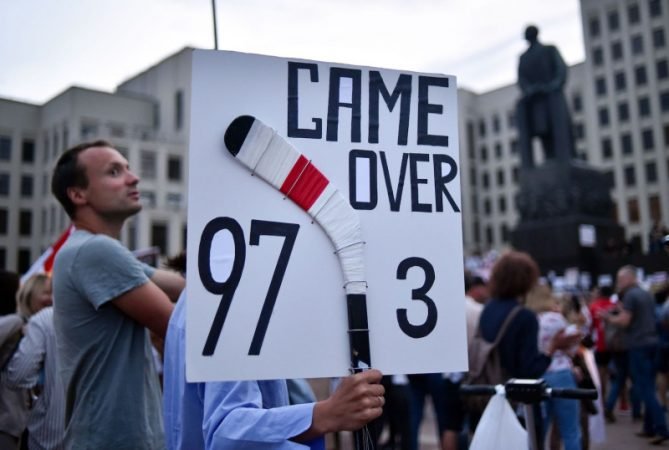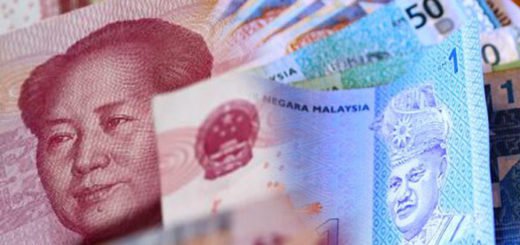End Game In Belarus

After 26 years as president, there’s not much chance Alexander Lukashenko can remain in power in Belarus unless Russia uses force to support him. America’s trying to stop that happening.
Excerpts from the Conversation between Duncan Bartlett, Editor – Asian Affairs and Ge Anna, Programme Presenter at The World Today on China Radio International.

Anna Ge: The huge protests in Belarus are continuing. There were reportedly 100,000 people out on the streets at the weekend. What do you think the implications are for Lukashenko’s presidency?
Duncan Bartlett: A hundred thousand people out on the streets is a lot of people in any situation, but given that Belarus is a small country population-wise – it’s only got about nine and a half million people – this was a vast protest. It was aimed against a president, who’s been there for 26 years.
In the past fortnight, the protests have grown bigger and they are receiving more international attention. Interestingly, the state media initially pretended that the demonstrations weren’t happening and tried not to report them. Then President Lukashenko tried to get the police to crack down hard on the protestors. People were imprisoned, but when they came out, they told international reporters that they’d been tortured. And I think that’s whipped up more resentment against the president. There’s no sign whatsoever of the public mood in a Belarus changing. In fact, there is a growing demand that the president should go.

Ge Anna: Lukashenko recently blamed the U.S. for flaming the protesters’ anger against him. And US Deputy Secretary of State Stephen Biegun is to visit the region. What is the US’s interest in Belarus?
Duncan Bartlett: Well, in some ways you might ask the question “Why should anybody care what happens in Belarus?” It is after all quite a small country and it’s not particularly important economically. The key point is geography because Belarus sits in a very important place in Europe. It’s between Russia and then other countries which are members of NATO, such as Poland.
I’ve been looking at Mr Biegun’s itinerary. He’s going to Moscow, he’s going to Vienna. And he’s also going to Lithuania – a small, former Soviet country, which is friendly with the United States. So from a strategic point of view, the Americans would like to see some more of these small nations in the region becoming its friends.
But there is a question in my mind, to what extent can Americans influence events? In that part of the world, it’s Russia that holds the predominant sway. The Americans are trying to counter the potential intervention by the Russians.
Anne Ge: But speaking of Russia, President Vladimir Putin has already spoken with both German Chancellor Angela Merkel and French President Emmanuel Macron regarding the situation in Belarus. With more involvement from the US, how will Russia and the EU?
Duncan Bartlett: Well, of course, I wasn’t party to the conversations that Vladimir Putin had with Angela Merkel or Emmanuel Macron. But I can imagine that what he said was, “Please keep out of this! This is our region, and we don’t want the EU intervening.”
The other thing to bear in mind is that because of the fairly poor state of relations between the European Union and the United States – and that’s deteriorated under president Trump – there’s not much basis at the moment for the US and the EU to take joint action. The situation could change if Russia intervenes, or if Mr Lukashanker uses a great deal of force and violence to try to suppress the protests.
My reading is that the Russians might be quite pleased if Mr Lukashenko goes, even though they’ve said that they are supporting him because his credibility is in shreds.
Anna Ge: I notice one of the common elements of these protests in Belarus and the protests in the United States is that young people are the major driving force. Why is that?
We have seen a rise around the world in street protests and political demonstrations, including in the United States and Eastern Europe and in Asia. For example, in South Korea, just a few weeks ago, there were something like 20,000 people on the streets demonstrating against the president. I do wonder how effective street protest is in enforcing or encouraging political change. But clearly many young people sometimes feel very frustrated and believe that politicians are out of touch with their concerns. That’s true in the sophisticated, mature democracies of Western Europe, including my country, the United Kingdom, but it’s especially true in Belarus, where Lukashako has behaved like an absolute authoritarian dictator for 26 years. People are feeling very fed up with life under that regime.


















